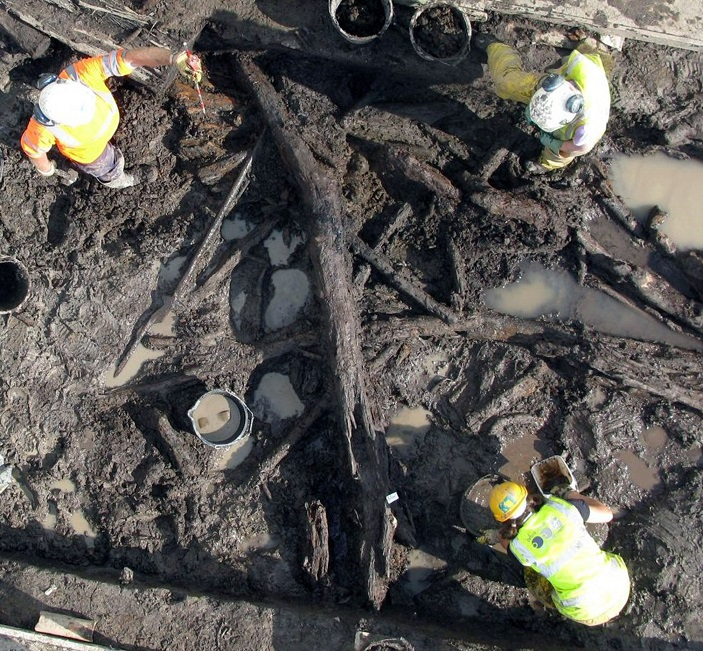
The recent discovery of more than 600 red ochre fragments at a 6,500-year-old ceremonial site near Carlisle, northwestern England, supports an ancient Greek explorer’s account from the 4th century BC in which Britons are referred to as “the painted people.”
Pytheas of Massalia, an explorer from the Greek colony that is modern-day Marseille, in southern France, was quoted by later geographers to have spoken of Great Britain as Prettanike, a term derived from the Celtic word Pretani, meaning “the [land of the] painted ones” or “the tattooed folk.”
Julius Caesar, writing in the mid-1st century BC, also mentioned that the inhabitants of Britain had a tradition of painting themselves.
The Carlisle red ochre discovery -the largest find of red ochre pieces yet found in the UK- not only complements the linguistic evidence on ancient Britons’ tradition of body painting, but also suggests a longheld gathering or festival which featured body painting rituals, according to The Indepenent.
A number of stones that would have been used to grind ochre deposits into powder were also found, along hundreds of thousands of fragments of flint.
Additional findings support the idea that the people that gathered at the Stone Age site in Carlisle, most probably during the salmon-fishing season in spring, originated from across Britain.
Ancient Britons encountered by Greek explorer
Pytheas of Massalia was the first-ever Mediterranean to reach and explore Great Britain and the Arctic Circle.
He is believed to have traveled as far as Iceland, becoming the first person on record to describe the midnight sun and the first known scientific visitor to see and describe the Celtic and Germanic tribes.

According to Henry Fanshawe Tozer, Pytheas’ voyage to the north took place at about 330 BC, derived from three main sources. Sadly, his original writings, titled On The Ocean, did not survive, but he is quoted in the works of later geographers, such as Strabo’s Geographica, Pliny’s Natural History and Diodorus of Sicily’s Bibliotheca historica.
Pytheas most likely crossed the English Channel and first reached Britain from the coast of what is modern-day Cornwall, where he described the flourishing trade of tin, before he continued north along the west coasts of what are now England, Wales and Scotland.
There, he described the area’s inhabitants, a Celtic-speaking people whom he called the Pretani, which would translate as “the painted ones.” This could be the name that these very people called themselves, or the name in which their neighbours described them.
Despite the thousands of years between the estimated period of use of the ritual site in Carlisle where the ochre fragments were discovered, and Pytheas’ voyage, previous finds in other parts of the U.K. suggest that red ochre continued to be used by prehistoric Britons until at least the Iron Age, which could bring the body painting habit closer in time to the so-called classical antiquity and Pytheas’ account of the people of the Prettanike.
See all the latest news from Greece and the world at Greekreporter.com. Contact our newsroom to report an update or send your story, photos and videos. Follow GR on Google News and subscribe here to our daily email!



